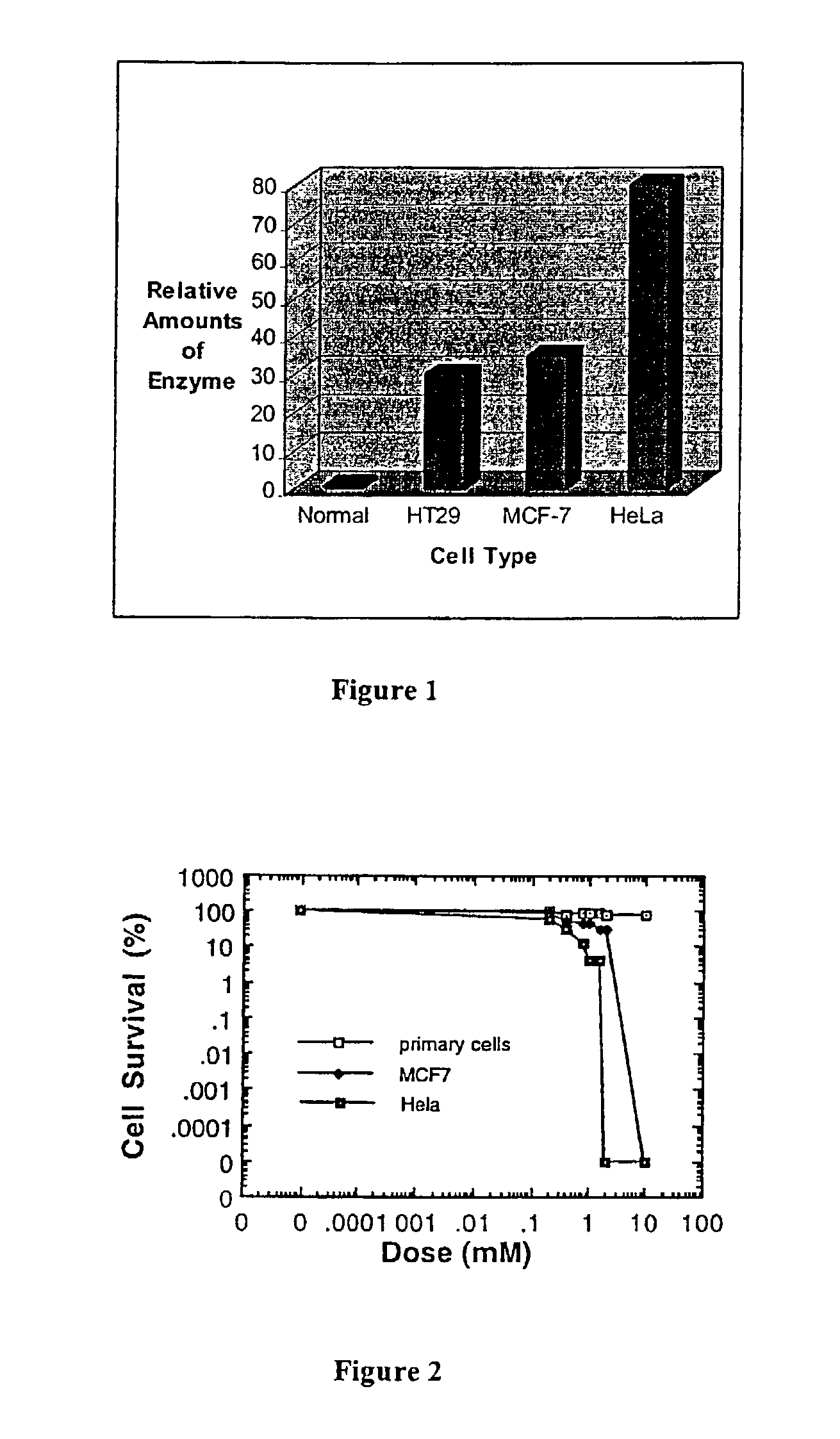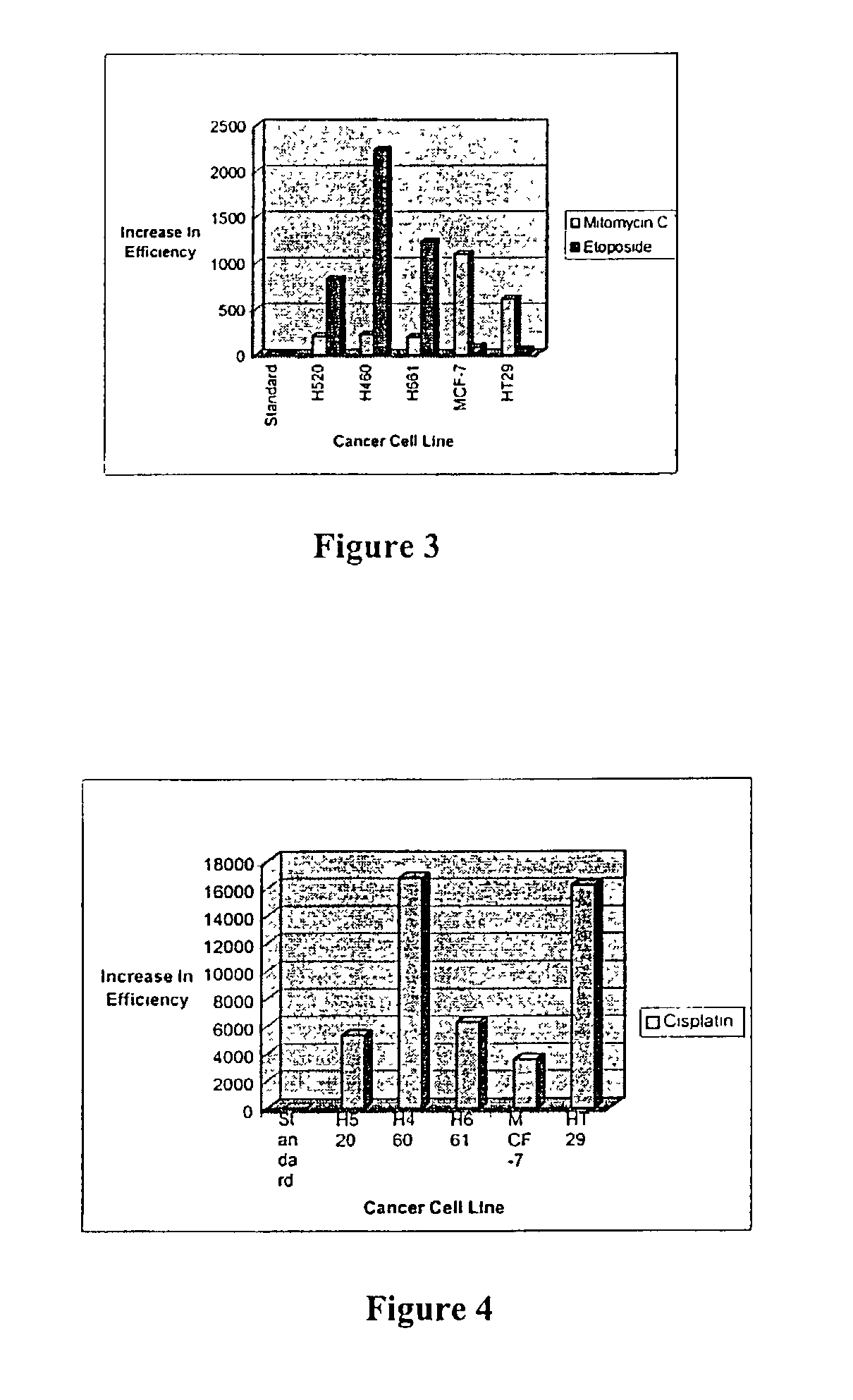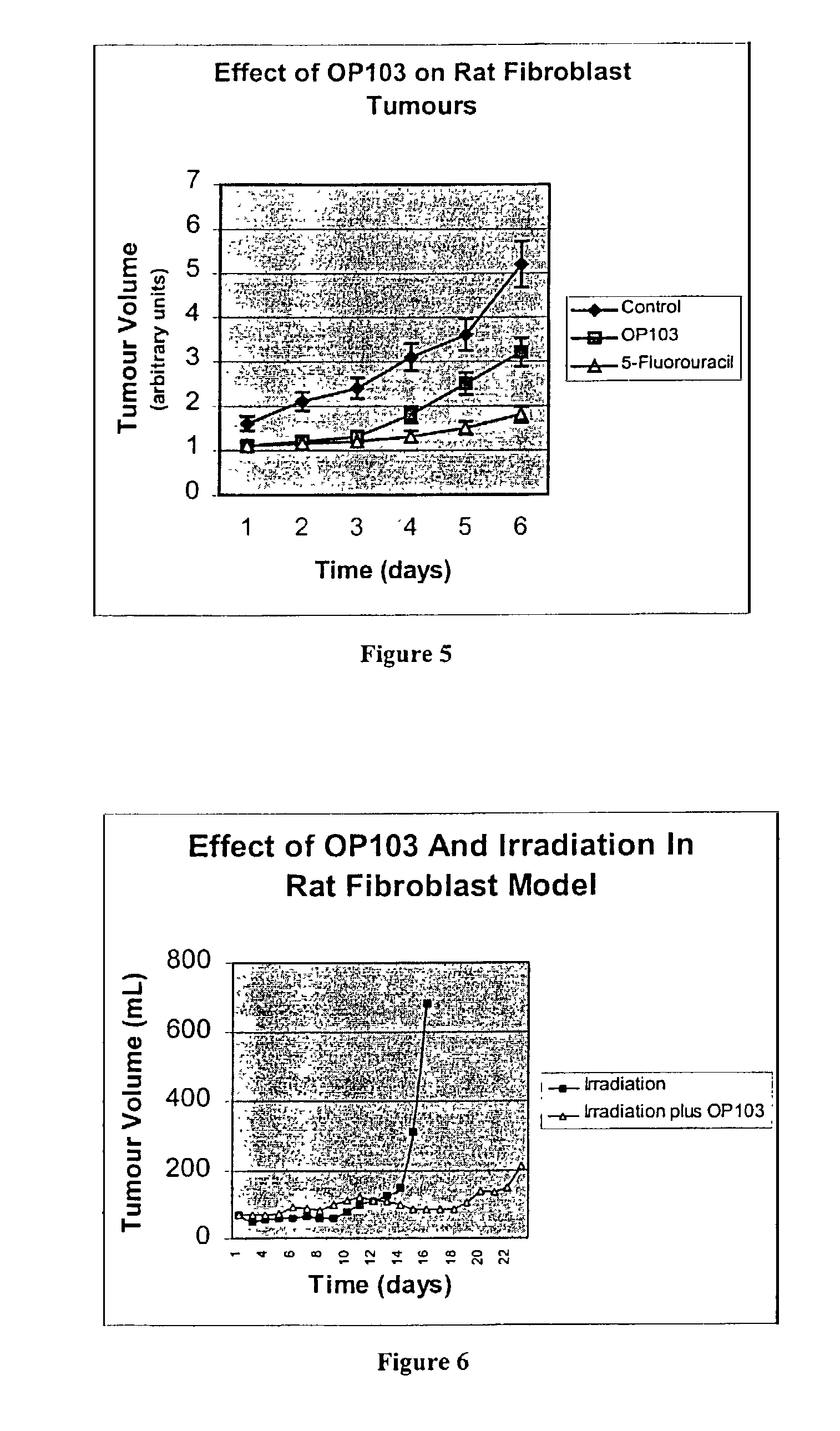Inhibitors of endo-exonuclease activity for treating cancer
a technology of endo-exonuclease and inhibition of endo-exonuclease activity, which is applied in the direction of biocide, plant growth regulator, animal husbandry, etc., can solve the problems of exposing dna to permanent damage, affecting the survival of strands, and affecting the survival of dna, so as to inhibit the proliferation and the concentration of the effect of increasing
- Summary
- Abstract
- Description
- Claims
- Application Information
AI Technical Summary
Benefits of technology
Problems solved by technology
Method used
Image
Examples
example 1
Determination of Endo-Exonuclease Levels in Cells
[0047]The endo-exonuclease level in the cell lines was determined with Immuno-blot method as described by Chow and Resnick (1987). Exponentially growing cells were boiled in lysis buffer (0.125 M Tris-HCl pH7.0, 20% glycerol, 4% SDS, 0.5 mM EDTA). The lysed cells were then centrifuged at 10,000 g for 10 min and 25 μl of the supernatant were electrophoresed on a 10% SDS-polyacrylamide gel (SDS-PAGE) according to the method described by Laemmli (1970). Proteins that had been separated on the SDS-PAGE gel were transferred electrophoretically to a nitrocellulose membrane. The nitrocellulose membrane was then reacted with rabbit antiserum raised against the monkey CV-1 endo-exonuclease in buffer B (10 mM Tris-HCl, pH8.0, 1 mM EDTA, 150 mM NaCl) containing 0.5% skim-milk powder according to the method previously described Chow and Resnick (1988). After the membrane had been washed three times in buffer B for 15 min., protein A (a polypeptid...
example 2
Determination of Cell Survival
[0049]Cell survival was determined according to the following methods:
[0050]Cell Survival—Clonogenic assay: Clonogenic measurement of cell survival was used to determine the initial effectiveness of pentamidine according to the method described in Sadekova et al. (1997). In this method, logarithmically phase cells (range from 1000 to 3000 cells / 50 mm depending on plating efficiency) were seeded onto cell culture plates together with various drug concentrations (ranging from 0.2 μM to 20 mM). After 1 week of growth, cell colonies were stained with crystal violet and the numbers of colonies were counted.
Cell Survival—MTT assay: The MTT (3-[4,5-Dimethylthiazol-2-yl]-2,5 diphenyl tertrazolim bromide) method of determining cell growth / cytotoxicity offers a convenient alternative to determine cell survival. MTT is a tetrazolium salt cleaved by mitochondrial dehydrogenases of living cells. Cleavage converts yellow, water soluble MTT to an insoluble, purple for...
example 3
Endo-Exonuclease Isolation and Assay
[0057]The human endo-exonuclease was isolated according to the method described by Liu and et al (1995). The cultured cells were detached with trypsin-EDTA and the cell suspensions were centrifuged at 4° C. with a force of 700 g for 10 minutes. The cell pellets were washed twice with cold phosphate buffered saline (PBS). The cells were then resuspended and sonicated in 20 mM Tris-HCl, pH 7.5, containing 5 mM EDTA and 1 mM PMSF (buffer A). The resulting cell lysis suspensions were centrifuged at 4° C. at 10,000 g for 15 min. The supernatants were then loaded onto an antibody-protein A-Sepharose affinity column, as previously described by Chow and Resnick (1987). After washing extensively with buffer A, (i.e. until the A280 of the eluates were zero), the column was then eluted with buffer A containing 3.5 M MgCl2 to elute the endo-exonuclease. The eluted endo-exonuclease was dialyzed extensively against buffer A with at least two changes of buffer a...
PUM
| Property | Measurement | Unit |
|---|---|---|
| Molar density | aaaaa | aaaaa |
| Molar density | aaaaa | aaaaa |
| Molar density | aaaaa | aaaaa |
Abstract
Description
Claims
Application Information
 Login to View More
Login to View More - R&D
- Intellectual Property
- Life Sciences
- Materials
- Tech Scout
- Unparalleled Data Quality
- Higher Quality Content
- 60% Fewer Hallucinations
Browse by: Latest US Patents, China's latest patents, Technical Efficacy Thesaurus, Application Domain, Technology Topic, Popular Technical Reports.
© 2025 PatSnap. All rights reserved.Legal|Privacy policy|Modern Slavery Act Transparency Statement|Sitemap|About US| Contact US: help@patsnap.com



